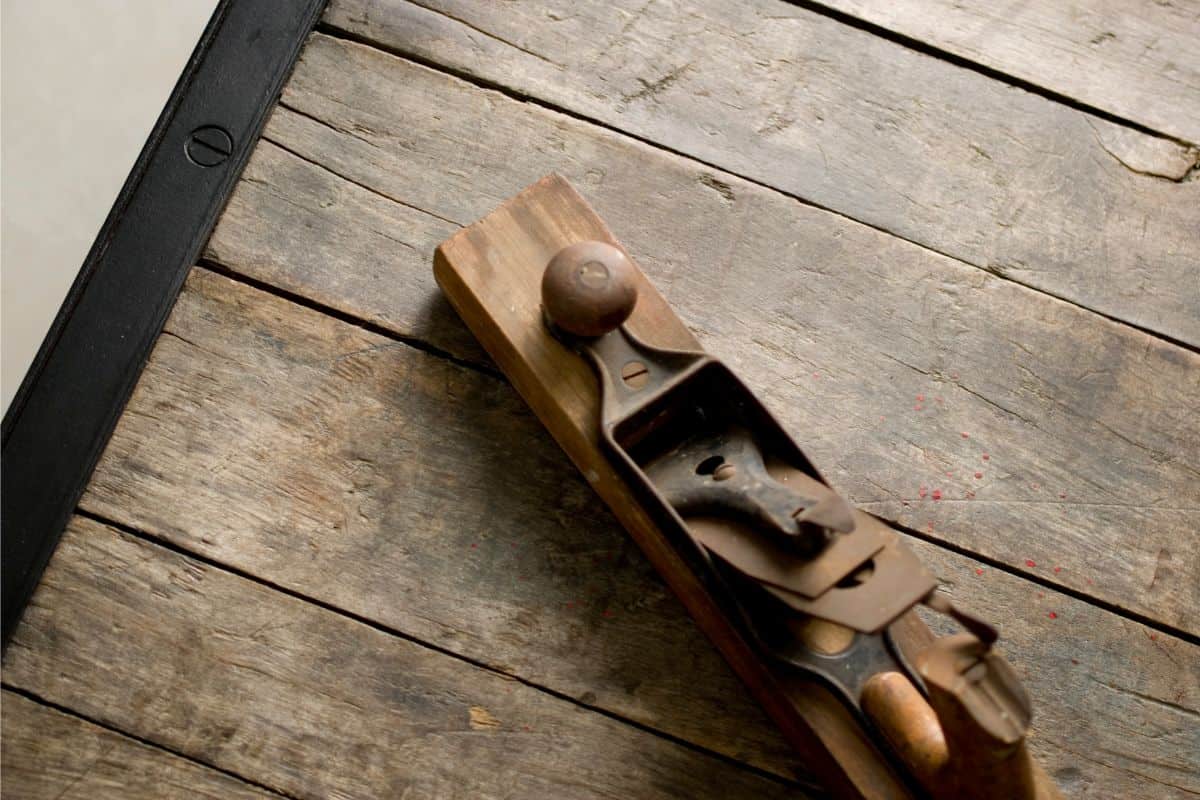Are you curious why wood planers come with a hefty price tag? Well, let’s dive in and explore why these tools can be so expensive. Wood planers are an essential tool for shaping and smoothing wood surfaces, making them indispensable for carpenters and woodworkers alike. But why does their cost seem to be on the higher side?
Firstly, it’s important to understand that wood planers are not your everyday run-of-the-mill tools. These machines are designed to be powerful, efficient, and durable, promising high-quality results. Manufacturers invest in top-notch engineering, premium materials, and cutting-edge technology to ensure their planers meet the demands of professionals and hobbyists.
Secondly, the production process itself can contribute to the higher price. Crafted with precision, wood planers require specialized manufacturing techniques and stringent quality control measures. From the carefully machined components to the assembly and calibration, every step is essential to deliver a reliable and accurate tool.
So, while the cost of wood planers may seem steep, remember that you’re investing in a high-performance tool that will serve you well in your woodworking endeavors. Join me as we delve deeper into the intricacies of wood planers and uncover the reasons behind their price tags.

Why Are Wood Planers So Expensive?
Wood planers are essential tools for woodworking enthusiasts and professionals alike. They are used to smoothen rough lumber, create uniform thickness, and produce precise cuts. However, one common question that often arises is why wood planers are so expensive. In this article, we will explore the reasons behind the high price tags attached to these machines, shedding light on the intricate craftsmanship and advanced technologies that go into manufacturing wood planers.
The Quality of Materials
One of the primary reasons why wood planers carry a hefty price tag is the quality of materials used in their construction. High-end wood planers are crafted from top-grade components such as cast iron bodies, steel cutters, and durable blades. These materials offer exceptional durability, precision, and stability, ensuring that the planers can handle heavy-load tasks while maintaining accurate results. Additionally, these high-quality materials contribute to the overall longevity of the machine, making them a worthwhile investment for serious woodworkers.
Furthermore, the use of premium materials also accounts for the smooth operation of wood planers. The sturdy construction and meticulous engineering decrease vibrations and enhance stability, allowing the planer to deliver consistently precise cuts and smooth finishes. The investment in quality materials ensures that wood planers can withstand the rigors of professional use, making them reliable and long-lasting tools.
Advanced Technology and Features
Another key aspect that justifies the high cost of wood planers is the incorporation of advanced technology and features. Modern woodworking machinery has evolved to include innovative features that enhance performance, efficiency, and safety. Wood planers often come equipped with state-of-the-art systems such as automated thickness control, digital displays for accurate measurements, and electronic feedback for optimal performance.
Furthermore, some high-end wood planers offer additional features like dust collection systems, helical cutterheads, and variable feed speeds. These technological advancements significantly enhance the functionality and versatility of the machine, allowing woodworkers to achieve superior results in less time. While these advanced features contribute to the overall cost, they also provide a multitude of benefits, making the investment worthwhile for professionals and dedicated hobbyists.
Precision Engineering and Manufacturing
Wood planers are complex machines that require precision engineering and manufacturing processes. From the design stage to the production line, careful attention is given to every detail to ensure that the planer performs flawlessly. Experienced engineers and skilled craftsmen work meticulously to create wood planers with tight tolerances, precise alignment, and smooth operation.
The intricate manufacturing processes involved in producing wood planers, such as CNC machining, ensure that every component is accurately fabricated to tight specifications. This level of precision guarantees optimal performance and long-term reliability. Additionally, the rigorous testing and quality control measures implemented during the manufacturing process contribute to the overall cost of the wood planers. However, these steps are necessary to deliver high-quality products that meet the demands of professionals seeking excellence in their woodworking projects.
Factors Influencing the Price of Wood Planers
1. Brand Reputation
Well-established brands with a long-standing reputation for quality and reliability often have higher-priced wood planers. These companies have invested years in research and development, continuously improving their products to meet the needs of discerning woodworkers. The brand reputation and customer trust associated with these names contribute to the higher price tag of their wood planers.
2. Size and Capacity
Wood planers are available in various sizes and capacities, catering to different project requirements. Larger planers capable of handling wider and thicker boards tend to be more expensive due to their increased material costs, heavier construction, and more powerful motors.
3. Type of Planer
There are different types of wood planers available, including handheld electric planers, benchtop planers, and thickness planers. Each type comes with its own features and capabilities, and these variations influence the price. Handheld electric planers, for example, are generally more affordable compared to heavy-duty thickness planers designed for professional use.
4. Accessories and Upgrades
Additional accessories and upgrades can also impact the cost of wood planers. Items such as extension tables, extra cutting knives, and dust collection attachments are often sold separately, making the overall purchase more expensive.
5. Country of Origin
The country of origin can significantly affect the price of wood planers. Manufacturing costs, labor rates, and import/export taxes can vary from one country to another. Wood planers produced in countries with higher production costs may have higher price points compared to those manufactured in countries where labor and production costs are lower.
6. Market Demand
The law of supply and demand also plays a role in the pricing of wood planers. If a particular model or brand is in high demand and has limited availability, the price may be higher due to increased competition among buyers.
7. Warranties and Customer Support
Reputable companies often provide extensive warranties and excellent customer support, which can be factored into the price of their wood planers. These added services provide peace of mind to customers and contribute to the overall value of the product.
In conclusion, wood planers are expensive due to the quality materials used, the incorporation of advanced technology and features, and the precision engineering and manufacturing processes involved. Factors such as brand reputation, size and capacity, type of planer, accessories and upgrades, country of origin, market demand, and warranties and customer support also influence the overall price. Despite the high cost, investing in a quality wood planer is essential for those serious about woodworking, as it guarantees superior performance, durability, and exceptional results.
Key Takeaways: Why Are Wood Planers So Expensive?
- Wood planers are expensive due to the high-quality materials used in their construction.
- Manufacturing costs, including labor and overhead expenses, contribute to the overall price.
- Wood planers require precision engineering and specialized components, which increase their cost.
- Brands with a reputation for quality and reliability often charge higher prices.
- Wood planers are a long-term investment for professionals and serious woodworking enthusiasts, justifying the higher price.
Frequently Asked Questions
Wood planers can be quite pricey, but there are several factors that contribute to their cost. In this section, we’ll explore some common questions related to why wood planers are expensive.
1. What factors contribute to the high cost of wood planers?
Wood planers are equipped with advanced features and technology that make them efficient and durable. The high quality and precision required in their design and construction contribute to their cost. Additionally, the materials used in wood planers, such as high-grade steel and sturdy components, add to the overall expense.
Furthermore, the manufacturing process for wood planers involves specialized machinery, skilled labor, and extensive quality control measures to ensure they meet industry standards. All these factors combined contribute to the higher price tag associated with wood planers.
2. Are there different types of wood planers, and does that affect their cost?
Yes, there are various types of wood planers, including handheld planers, benchtop planers, and thickness planers. The type of planer and its specific features can greatly impact the cost. Handheld planers tend to be more affordable as they offer less power and versatility compared to benchtop or thickness planers.
Benchtop planers are larger and more powerful, capable of handling bigger projects and delivering more precise results. They often come with additional features like dust collection systems or built-in safety measures, which can also contribute to the higher cost. Similarly, thickness planers are designed specifically for thicknessing wood and may have specialized features, making them more expensive.
3. Do brand and reputation affect the price of wood planers?
Absolutely! The reputation and brand name of a wood planer play a significant role in its pricing. Well-established brands with a history of producing reliable and high-quality woodworking tools often demand higher prices for their products. This is because these brands have invested in research, development, and innovation, leading to a product that is superior in terms of performance, durability, and customer satisfaction.
While there may be budget-friendly options from lesser-known brands, opting for a reputable brand can provide peace of mind in terms of warranty, customer support, and the overall longevity of the tool.
4. Can the size and capacity of a wood planer affect its price?
Yes, the size and capacity of a wood planer can impact its cost. Larger planers that can handle wider or thicker pieces of wood come with more robust motors and components, driving up the price. Additionally, larger planers may require more complex engineering and construction, contributing to the overall expense.
If you’re working on smaller woodworking projects or have limited space, opting for a smaller planer with a lower capacity can help reduce costs without compromising the quality of your work.
5. Are there any additional features that can increase the cost of wood planers?
Absolutely! Wood planers can come equipped with various additional features that enhance their performance and convenience, but also increase their price. Some common features that can drive up the cost include built-in dust collection systems, digital displays for precise measurements, automatic blade settings, and adjustable feed rates.
While these features can greatly improve the overall efficiency and ease of use of the wood planer, they also contribute to the higher price point. It’s important to assess whether these additional features are necessary for your specific woodworking needs and budget.

Why do I have so many wood hand planes on the wall?
Summary
Wood planers are expensive because they have advanced features and high-quality materials. The cost also includes research and development, manufacturing, and profit for the company.
Wood planers are essential tools for woodworking projects. They save time and produce smooth and even surfaces, making them worth the investment for serious woodworkers.
